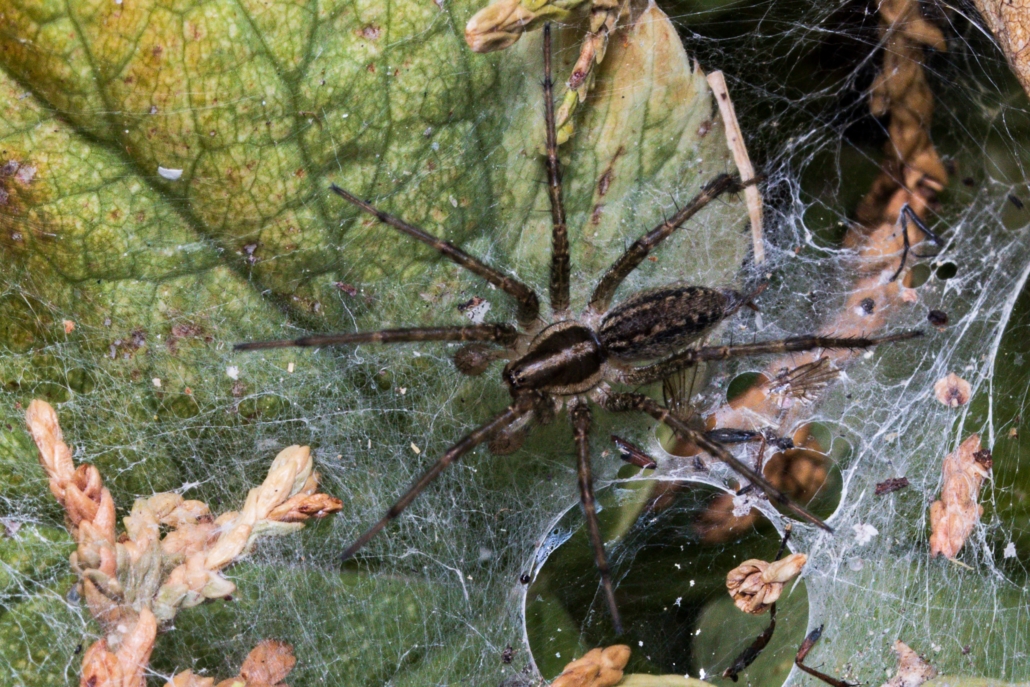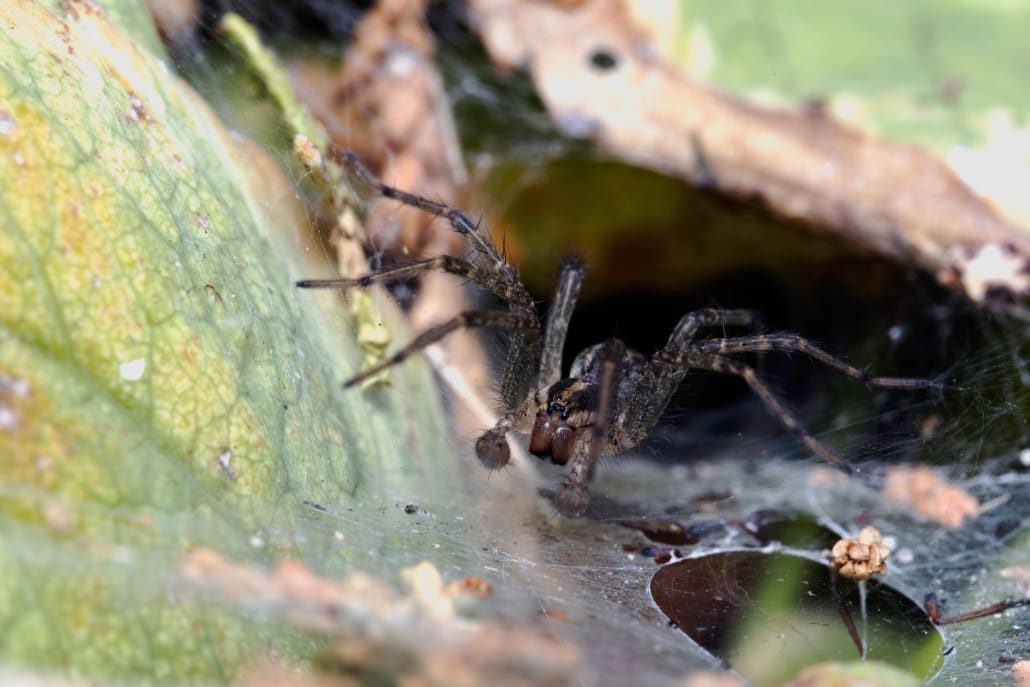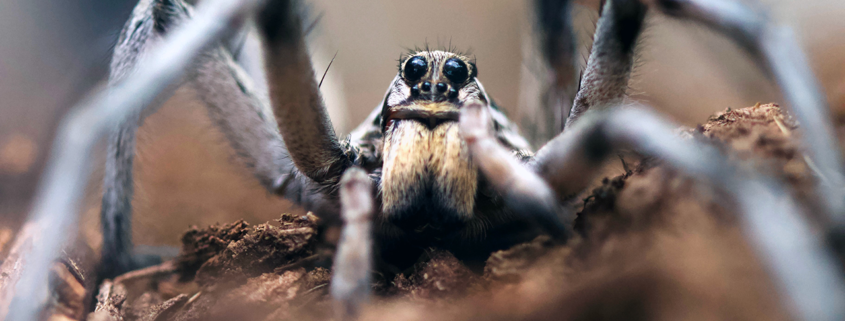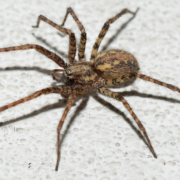How to Get Rid of Wolf Spiders
If you live in Washington state, you most likely have a story about being confronted with a big, hairy wolf spider in your home or backyard. Unfortunately, wolf spiders are a common intruder in Pacific Northwestern homes. You might be wondering where these unwelcome house guests come from, and what can be done to keep them outdoors. As temperatures cool down and autumn weather rolls in, wolf spiders in Washington begin to leave the comfort of their grassy habitats to seek cover in the unsecured crevices of your home. Once they infiltrate your residence, they are known to hide among the clutter of your living space, only making themselves known when you unsuspectingly move a box or appliance.
While they may look as intimidating as their namesake would suggest, the good news is that wolf spiders are mostly harmless to your family. Here is everything that you need to know about how to get rid of wolf spiders in your house, as explained by the experts at Pest Pros.
Wolf Spider Identification
How do you know if the creepy crawly that has made itself at home is a wolf spider? Here are a few things to watch out for:
- Eye Orientation – Like all spiders, these pests have 8 eyes and 8 long, hairy legs. However, unlike most spiders, wolf spiders have their eyes arranged in 3 rows to better hunt their insect prey. The same sharp vision that they use to find entry points into your home is used to ambush their unsuspecting victims.
- Speed – If you’ve stumbled upon a wolf spider in your home, you may have noticed that they scurry away very quickly and are difficult to catch up with and trap. This is because wolf spiders do not create webs to trap their prey, opting to instead use their long and quick legs to pounce onto smaller bugs before they even realize that the spider is there!
- Size – While these pests can be found on both coasts of the United States, the size of wolf spiders in Washington can range anywhere from 1 to 4 inches in length. In other areas of the west coast, they can even grow to be a bit longer than 4 inches including their legs. They tend to be more scaled down in size on the east coast.
- Eggs on Abdomen – The most distinct feature that sets wolf spiders apart from other arachnids is the fact that mother spiders carry their babies on their abdomen, making wolf spider extermination to be a tricky task to undertake without potentially making the problem even worse.
Are Wolf Spiders Dangerous?
Unlike the more poisonous brown recluse spider, wolf spiders tend to loiter in less secluded and more easily accessible areas of the home. Even so, they tend to be quite shy and avoid humans as much as they can. The main goal of the wolf spider during this time of year is to stay warm and away from the frigid autumn weather, and they do not like to be disturbed. Because of this, they do not often bite unless they have been thoroughly disturbed and are distressed.
While being bitten by a wolf spider is unlikely, it is still something that can happen. When these spiders do bite, their fangs inject a mild venom that is non-lethal to humans. Their bites are powerful enough to kill their prey, but do not have much of an effect on us; on average, we are 500 times larger than the size of a wolf spider’s typical prey. The most common reaction that humans have to a wolf spider bite is swelling and potentially a mild fever. This is not unlike the symptoms of being stung by a wasp.
While wolf spiders are not fatally poisonous to humans, they are still an unpleasant uninvited house guest that can live for about a year.


How to Get Rid of Wolf Spiders
If a wolf spider has already found its way into your home, the best way to avoid accidentally releasing the hundreds of spider hatchlings that female wolf spiders ferry around is to trap your new uninvited house guest. The worst thing that you can do is allow your arachnophobia to take over and attempt to squish the spider in a panic; this is to be avoided at all costs! Unless you are looking for a few hundred new 8-legged pets, it is best to find a container to put over the spider to escort it out of your home.
The best way to exterminate a wolf spider is to find a way to keep them out of your home in the first place. There are various ways that this can be done by creating physical barriers that disallow entry:
- Add weather stripping to seal the entryways of your home’s windows and doors.
- Caulk the cracks and holes that expose your inner and outer walls to the outside.
- Repair any openings that you find immediately; it won’t take wolf spiders very long to find them once they start looking!
- Clear all clutter inside of your home where they can comfortably hide. Wolf spiders love their privacy and will take up residence in clutter!
- Clear debris outside of your home where they can camp out while waiting for an opportunity to slip in. This includes removing mulch and tall vegetation from around your home’s foundation.
Since wolf spiders prey on insects, another great way to discourage them from sticking around is to reduce the number of small bugs that will be attracted to your residence. This can be done by dimming the lights on the exterior of your home to avoid attracting the small flying insects that they love to snack on. If you have a problem with small bugs infesting your home, solving this first might help solve your wolf spider dilemma as well.
Your local licensed pest control professionals will be able to offer the best solution to your infestation.
Call Pest Pros for Wolf Spider Extermination
Every pest emergency is unique and requires a specialized approach to eradicate unwanted visitors for good. Contact our pest control professionals at Pest Pros to learn more about our expert pest extermination services in Washington.


 Free Image download from Pexels
Free Image download from Pexels 


